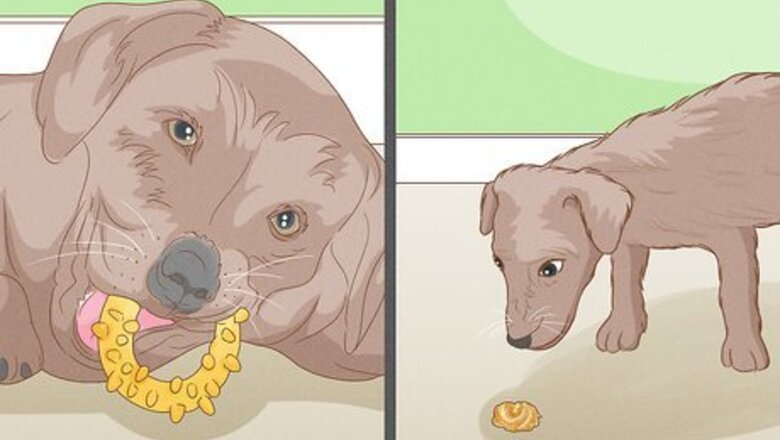
views
Give your pup a variety of toys.

Teething puppies love to chew, and it loosens their teeth. Provide your pup with safe, veterinarian-approved chew toys like teething rings and plastic chews. Flavored chew toys are also highly appealing to teething pups. Avoid plush toys, as it's easy for your puppy to rip off a chunk and swallow it while playing. Change up your puppy's toys regularly. They have shorter attention spans and are intrigued by anything new and unfamiliar. If the toys don't have a flavor, try spreading a dollop of peanut butter on them to attract your puppy's attention. Tough rubber toys are best for teething because they're soft enough to chew safely but hard enough to withstand the chewing.
Get some nutritious dog chews.
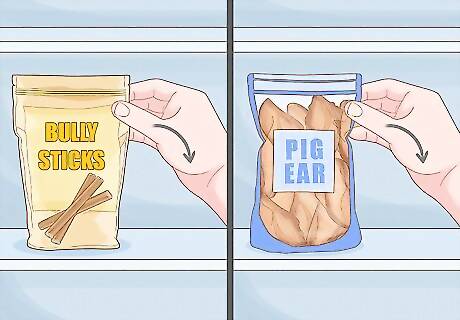
Chewy treats can also keep your pup comfortable during teething. For edible chews, make sure that your puppy will be able to gnaw on them slowly without ripping off and swallowing big chunks. Check the ingredients for each chew you buy, too; a healthy chew will be low in calories and contain a small number of ingredients, with one main all-natural meat component. Bully Sticks and pig ear chews are all popular options. There are also vegetarian chews for puppies if you're looking to change the flavors a little.
Freeze a wet rag for your pup.

The rag is chewable, and the cold numbs their pain. Soak a clean dish rag or washcloth in water, then wring it out, twisting it into a rope-like shape before placing it in the freezer. Once the rag is frozen, give it to your puppy to chew on until the rag thaws out. Then, you can just rinse it out and freeze it again.
Give your pup an ice cube.
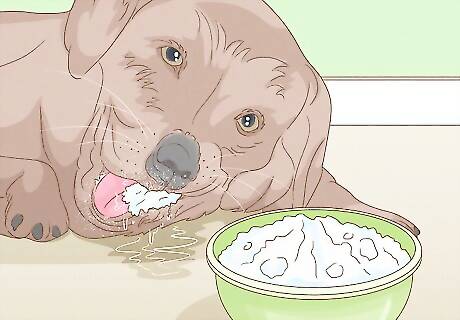
The cold ice helps loosen your dog's teeth and numb their gums. Ice cubes are easy and totally free to make, and many puppies enjoy gnawing on ice cubes to relieve their teething pains. Keep in mind that smaller breeds (given how small their mouths are) may do better with a bowl of shredded ice instead. A tasty alternative to plain ice cubes is freezing chicken or beef broth in ice cube trays for your puppy to chew on.
Invest in freezable toys.
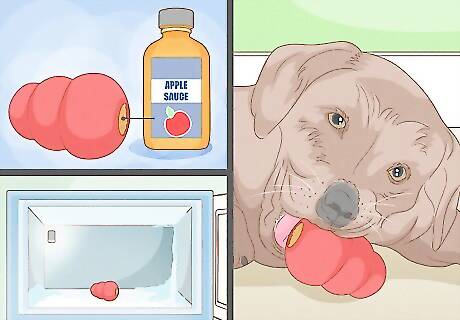
Freezing toys is a great way to make them more enticing for your pup. Many rubber teething toys are designed to be frozen for extra comfort. You could also give your puppy's chew toy a flavorful twist; pick a toy that allows you to put treats inside, and add peanut butter or apple sauce to it before freezing. Kongs and edible teething rings are popular choices to store in the freezer and then give to puppies.
Feed your pup wet food.
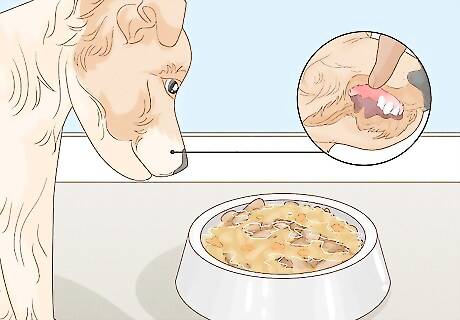
Wet food feels better on a sore puppy's mouth. As your dog's baby teeth fall out, they might be reluctant to eat because hard food can be painful. If you notice your dog hesitating by the food bowl, switch to wet food instead. That way, you'll keep your dog healthy and well-fed as they go through teething. However, introduce wet food to your puppy slowly, as any sudden change in diet can upset their stomach. To get your pup used to a new food, start by adding a small amount of wet food to the pup's kibble. Over the next week, steadily increase the amount of wet food and reduce the amount of kibble until your pup is eating only wet food. Alternatively, you can add water to hard food and soften it up.
Massage your puppy's gums.
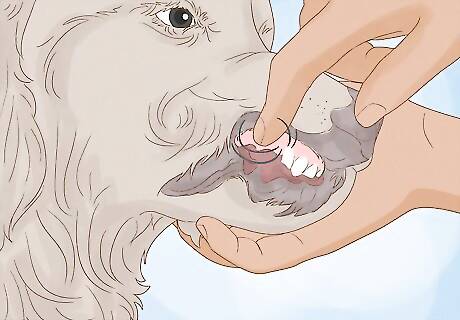
This eases your pup's pain and gets them used to regular dental care. Place one hand under your pup's chin and gently massage their upper and lower gums with a finger toothbrush. Move your finger in small, circular motions for the duration of the massage. If you need to acclimate your dog to the massage (and later teeth-cleaning), touch the finger toothbrush to their teeth and offer them a reward, continuing to do so until the pup is comfortable with your finger in their mouth. You won't need to start brushing your puppy's teeth until their adult set has fully grown in. However, massaging their gums will make it easier to transition into teeth-brushing later.
Supervise playtime to keep your teething pup safe.
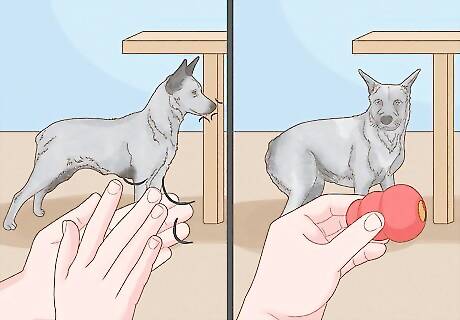
Intervene if your puppy tries to eat pieces of a toy or chew on furniture. All of your puppy's playtime should be spent engaged with you and under your supervision. If your dog starts eating something they shouldn't, make a loud noise to interrupt them and offer them a different toy or chew instead. Reward your puppy with praise when they take the toy to teach them what they should and shouldn't chew on. It's also essential to monitor your puppy when they play with regular toys. No toy is 100% safe for dogs, given how easily a pup can tear and swallow small pieces.
Puppy-proof your home so your dog can chew safely.
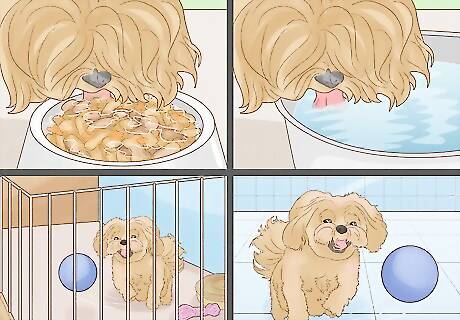
Ensure your puppy doesn't chew on harmful objects while teething. Keep hazardous objects like wires, shoes, plants, and plastic bags away from your pup's reach. In addition, you can rely on your puppy's crate to help keep them safe, as your pup should ideally be napping about 85% of the day. Let your pup out of the crate to eat, drink, go to the bathroom, and play (under your supervision) and then return the dog to the crate before they have the chance to be destructive.
Let all teeth fall out naturally.
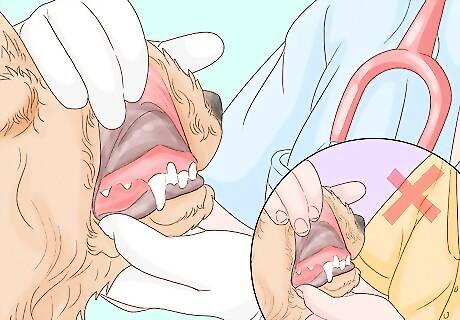
It can be hard to see your dog in pain, but pulling teeth won't help. Teething happens on its own, even if you do nothing, and ends at around 6 months for the puppy. Attempting to pull a tooth yourself could break the root, leaving part of the tooth behind and potentially causing an infection. Only a qualified veterinarian can remove teeth if they decide it's necessary.
Watch your pup for signs of teething problems.
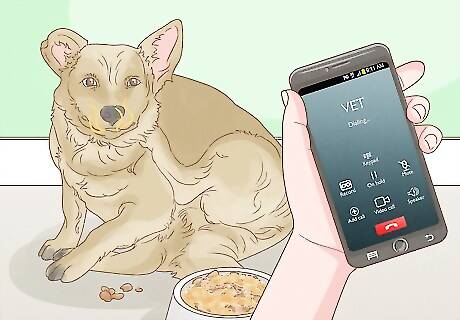
All dogs find teething painful, but some issues may warrant a vet visit. Call your veterinarian if your pup has trouble eating (even after trying wet food) and either drops food out of their mouth or seems to avoid chewing. It's also good to call if you notice an odor coming from your pup's mouth or they start rubbing at their mouth. It's also important to understand that there are unpleasant but totally normal aspects to teething. For instance, drooling more than usual or small, pink-tinged blood spots on toys are common side effects of teething.
Take your pup to the veterinarian if you have concerns.
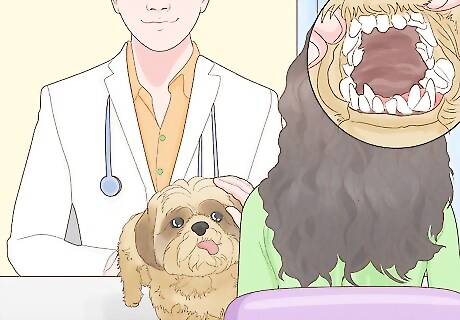
Teeth that don't fall out on their own may need a surgical extraction. Ask your puppy's vet about the next steps if you notice baby teeth that don't fall out even after adult teeth grow in. Leaving baby teeth inside a dog's mouth can become extremely painful, so it's best to get a professional opinion as soon as possible. Though it can happen to any dog, smaller breeds like chihuahuas, pugs, and Shih-Tzus are more likely to have retained baby teeth into adulthood. Puppies whose parents had retained baby teeth are also more likely to have the same problem. Learn about the parents' medical history to know what to look for.












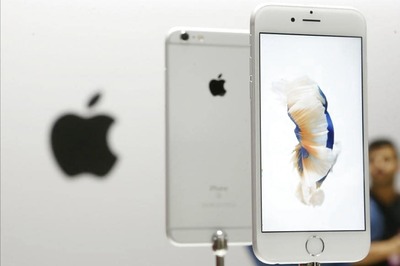
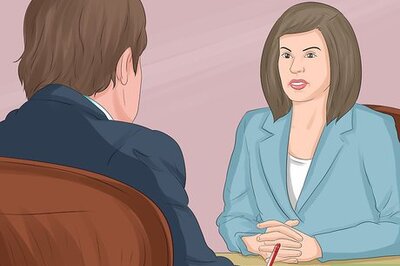

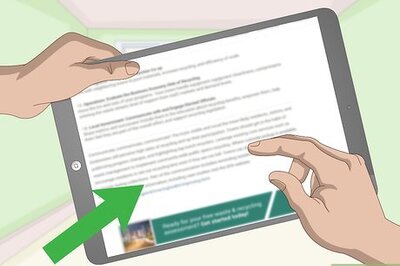
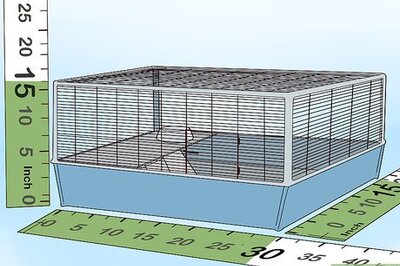
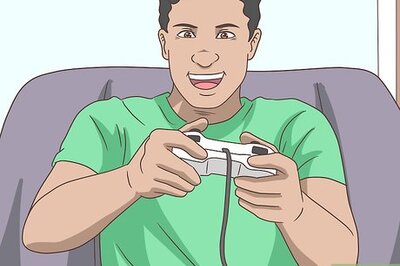
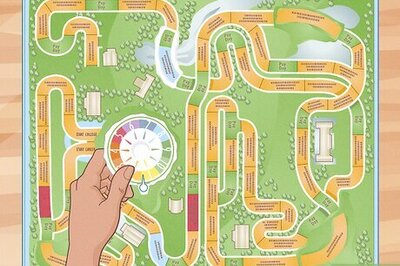

Comments
0 comment